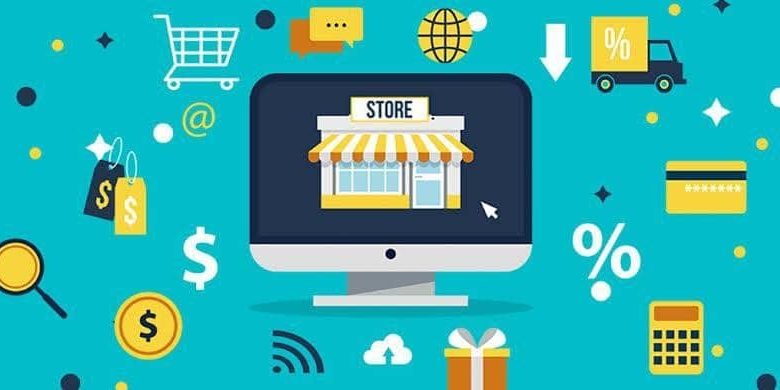 Launching an online store is an exciting venture, but what happens when the sales don’t start rolling in as expected? It’s a common issue for many e-commerce businesses to experience little or no sales activity, especially in the early stages. If you’re facing this challenge, don’t panic. There are several strategies you can implement to turn things around. In this article, we’ll explore practical steps you can take to diagnose the problem and boost sales. What to do when your online store has no sales activity. Find out here from industry experts how to improve your website and online sales.
Launching an online store is an exciting venture, but what happens when the sales don’t start rolling in as expected? It’s a common issue for many e-commerce businesses to experience little or no sales activity, especially in the early stages. If you’re facing this challenge, don’t panic. There are several strategies you can implement to turn things around. In this article, we’ll explore practical steps you can take to diagnose the problem and boost sales. What to do when your online store has no sales activity. Find out here from industry experts how to improve your website and online sales.
Analyze Your Website Traffic
First and foremost, it’s important to understand whether your online store is attracting enough traffic. Without sufficient visitors, generating sales is impossible. Begin by using tools like Google Analytics to assess your website traffic. Are people visiting your site regularly? If traffic levels are low, this could be the root cause of your sales issue.
Additionally, examine where your traffic is coming from. Are visitors finding your site through search engines, social media, or paid advertising? Understanding your traffic sources can help you identify which marketing channels are working and which need improvement. If organic traffic from search engines is low, it may be time to focus on search engine optimization (SEO) to increase visibility.
Moreover, if you’re getting traffic but still have no sales, it’s crucial to examine visitor behavior. Google Analytics can provide insights into how long visitors stay on your site and which pages they visit. High bounce rates or short session durations may indicate that visitors aren’t finding what they need or are leaving due to poor user experience.
Optimize Your Website’s User Experience (UX)
If traffic isn’t the issue, the next step is to improve your website’s user experience. A poorly designed website can drive potential customers away. First, make sure your website is easy to navigate. Ensure that categories are clearly labeled, product pages are easy to find, and the checkout process is smooth and straightforward.
Additionally, your website must be mobile-friendly. With more consumers shopping on their phones, a responsive design is essential. Ensure that your website looks and functions well on all devices, including smartphones and tablets. If your site isn’t optimized for mobile, you could be losing a significant portion of potential customers.
Furthermore, check your website’s loading speed. A slow-loading website can cause visitors to leave before they even see your products. Use tools like Google PageSpeed Insights to identify performance issues and optimize your site for faster loading times. Improving speed can reduce bounce rates and keep visitors engaged long enough to make a purchase.
Moreover, simplify your checkout process. A complicated or lengthy checkout process can lead to cart abandonment. Offer guest checkout options, reduce the number of steps, and provide multiple payment options to make it easier for customers to complete their purchase.
Review Your Product Offering and Pricing
Another factor to consider when your store has no sales activity is your product offering and pricing. First, take a close look at your products. Are they in demand? Are you offering items that meet the needs or interests of your target audience? Conduct market research to ensure that your products align with current trends and customer preferences.
In addition to the product selection, review your pricing strategy. Pricing that’s too high may discourage potential buyers, while prices that are too low can raise concerns about product quality. Research your competitors’ pricing to ensure your prices are competitive. If necessary, offer promotions, discounts, or bundles to attract new customers.
Furthermore, ensure your product descriptions are clear and compelling. Descriptions should highlight the benefits, features, and unique selling points of each product. High-quality images and videos are also essential. Customers want to see what they’re buying, so professional visuals can make a significant difference in the purchasing decision.
Improve Your Digital Marketing Strategy
If your products are well-priced and your website is user-friendly, the next step is to evaluate your digital marketing efforts. Without effective marketing, it’s challenging to drive traffic and generate sales. Start by reviewing your current marketing channels. Are you investing in the right platforms?
First, focus on search engine optimization (SEO) to drive organic traffic. Optimizing your product pages and blog content with relevant keywords can improve your rankings on search engines like Google. SEO takes time to show results, but it’s a long-term strategy for increasing visibility and attracting potential customers.
Additionally, consider running paid advertising campaigns. Platforms like Google Ads, Facebook Ads, and Instagram Ads allow you to target specific audiences based on demographics, interests, and behaviors. If you haven’t invested in paid advertising yet, this could be a way to quickly increase traffic and sales.
Moreover, social media marketing is essential for brand awareness and engagement. Regularly post content that showcases your products, offers promotions, and engages with your audience. Social media platforms like Instagram and Pinterest are particularly effective for e-commerce businesses, especially those in industries like fashion, beauty, and lifestyle.
Email marketing is another powerful tool for driving sales. Build an email list by offering discounts or exclusive offers to new subscribers. Then, send targeted email campaigns promoting your products, sharing helpful tips, or offering limited-time deals. Personalized emails based on browsing history or past purchases can significantly increase conversion rates.
Build Trust With Your Audience
Building trust is a key factor in turning visitors into paying customers. Many shoppers are hesitant to purchase from unfamiliar online stores. To address this, ensure that your website has clear trust signals. Display customer reviews, ratings, and testimonials on your product pages. Positive reviews reassure potential buyers that your products are reliable and worth the investment.
Additionally, provide clear information about your shipping, return, and refund policies. Transparent policies give customers confidence in making a purchase, knowing that they can return items if needed. Offering free shipping or an easy return process can also reduce hesitation and increase conversions.
Furthermore, use trust badges, such as secure payment icons or SSL certificates, to show that your website is safe and secure. Customers are more likely to complete a transaction if they know their payment details are protected.
Retarget Visitors Who Didn’t Buy
Even if visitors don’t make a purchase on their first visit, you can still encourage them to return and buy later. Retargeting is an effective strategy for bringing back potential customers who left without purchasing. Use tools like Facebook Ads or Google Ads to show retargeting ads to visitors who previously browsed your site.
Additionally, abandoned cart emails can recover lost sales. Send automated emails to customers who added items to their cart but didn’t complete the checkout process. Include a reminder of the products they left behind, offer an incentive like a discount, and make it easy for them to return and complete the purchase.
Furthermore, use email marketing to keep potential customers engaged. If someone signed up for your newsletter but hasn’t made a purchase, send them product recommendations, special offers, or exclusive content to encourage them to buy. Consistent communication can help nurture leads and eventually convert them into paying customers.
Monitor and Adjust Your Strategy
Finally, continuously monitor your website’s performance and make adjustments as needed. Use analytics tools to track metrics like traffic, conversion rates, bounce rates, and cart abandonment. These insights will help you understand what’s working and where there’s room for improvement.
Moreover, regularly test different aspects of your website and marketing strategy. Conduct A/B testing to compare different headlines, product images, or call-to-action buttons. Small changes can have a big impact on conversion rates, so testing allows you to refine your approach and optimize for better results.
Additionally, listen to customer feedback. If you receive comments about issues with your website, product selection, or customer service, take them seriously and make improvements. Happy customers are more likely to return and recommend your store to others, so creating a positive shopping experience is key to long-term success.
Conclusion
In conclusion, when your online store has no sales activity, it’s essential to take a step back and evaluate multiple factors. From analyzing website traffic to improving user experience, product offerings, and digital marketing efforts, there are many ways to boost your sales. Building trust, retargeting visitors, and continuously monitoring performance are critical steps to ensure your store generates the sales it deserves. With the right adjustments, your store can go from struggling to thriving. What to do when your online store has no sales activity. Find out here from industry experts how to improve your website and online sales.








